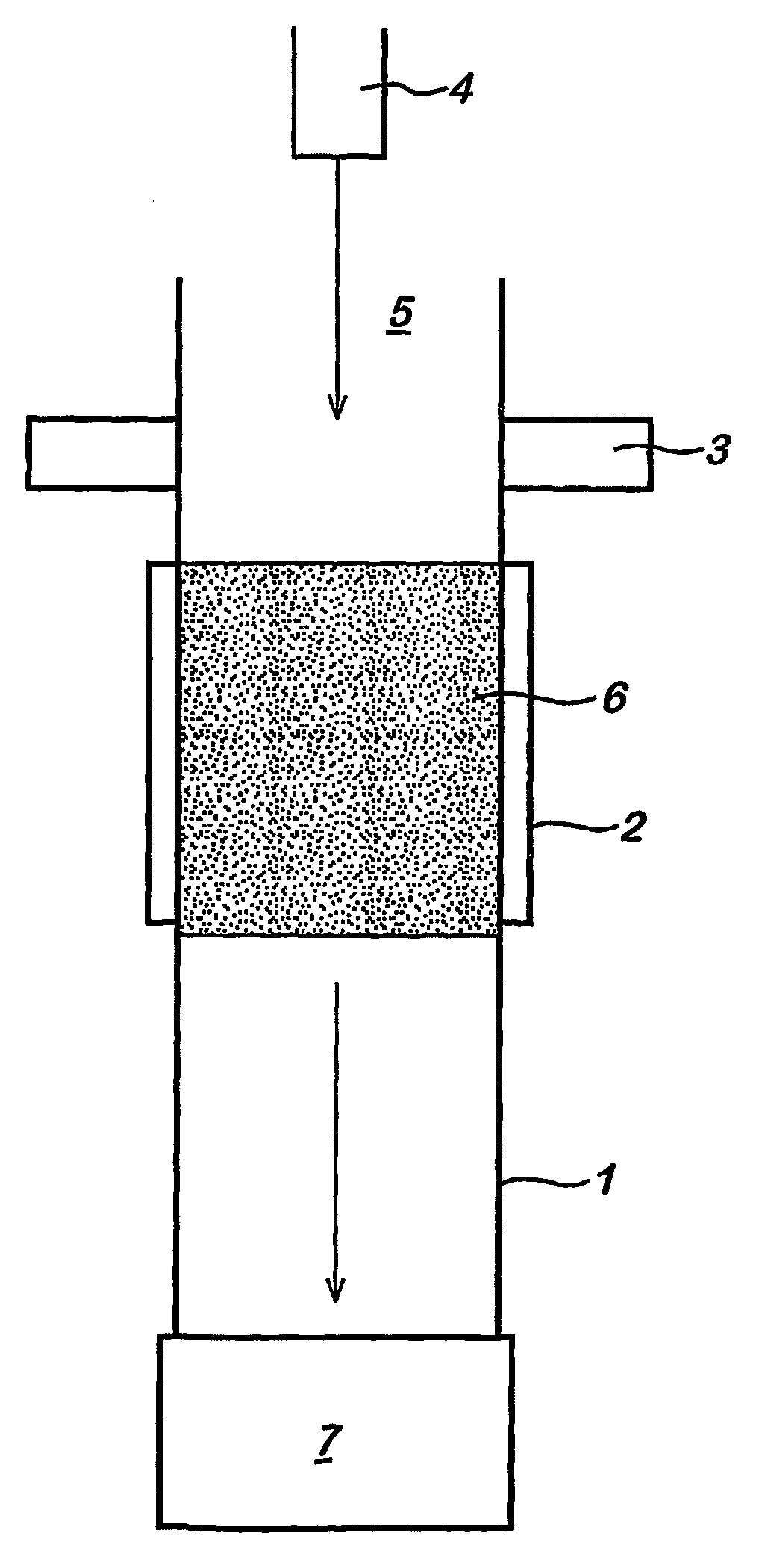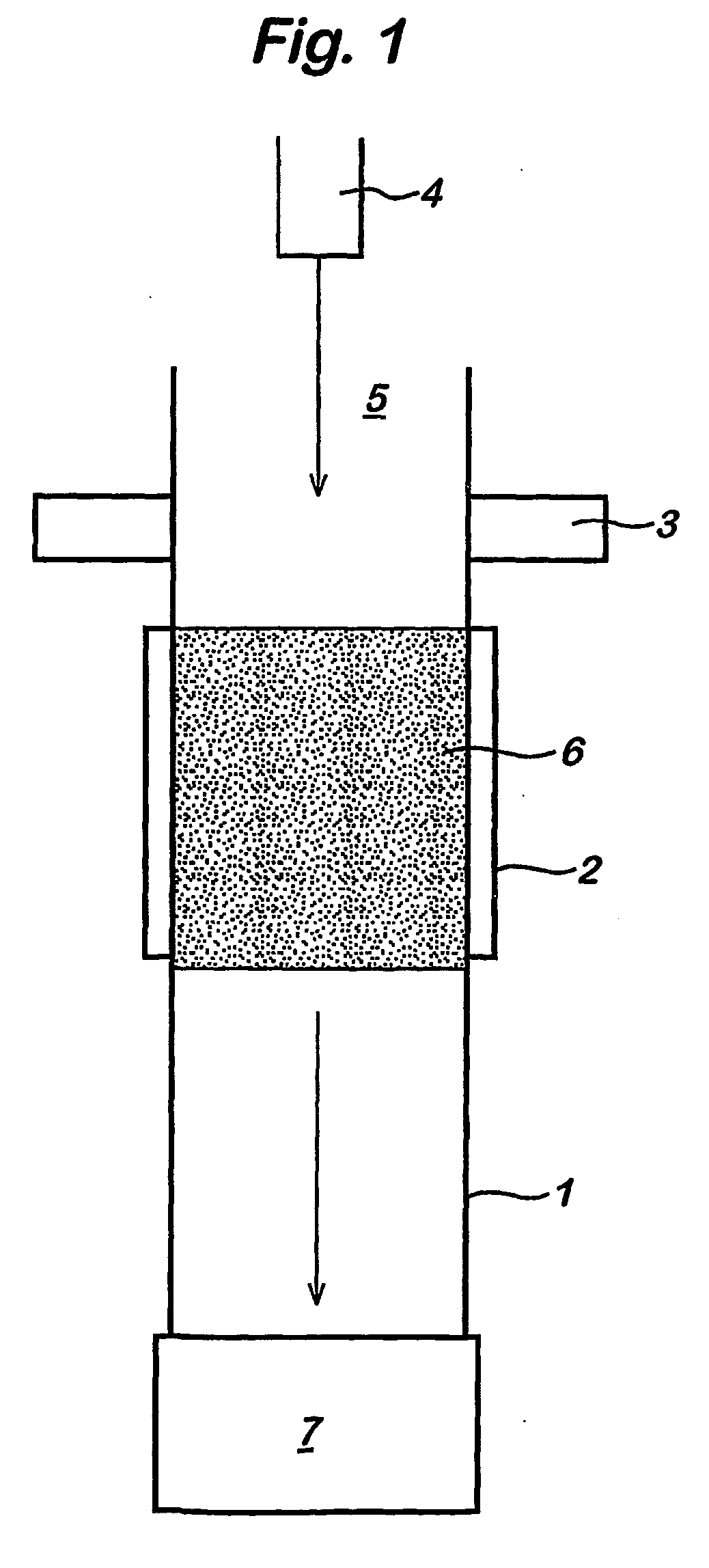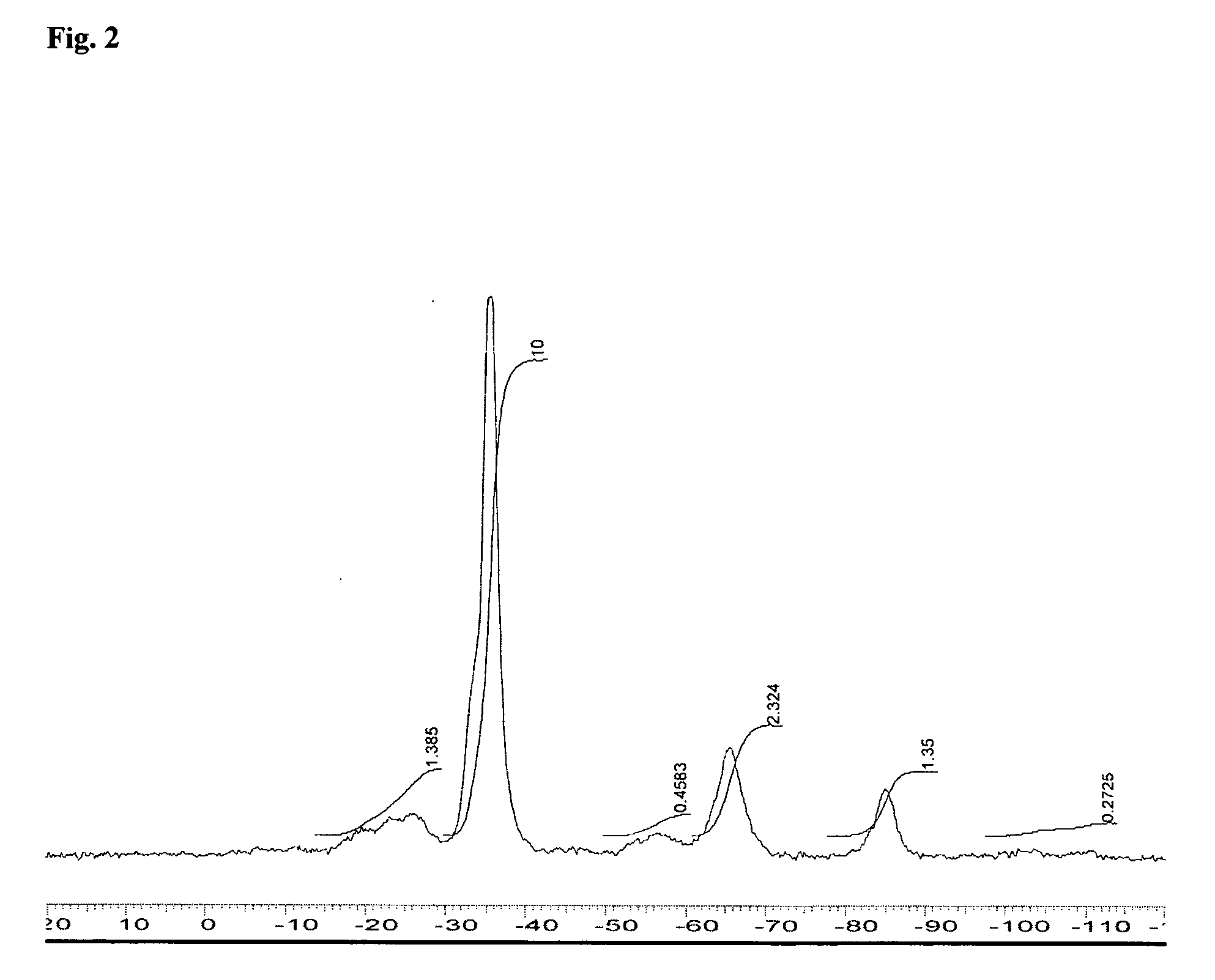Gel and powder making
a powder making and gel technology, applied in the field of gel and powder making, can solve the problems of inability to penetrate the market or be taken up by the industry to the same extent as the lower pressure, system failure to achieve the same degree of penetration or difficulty, and significant limitations of corona/flame systems, etc., to achieve the effect of high levels
- Summary
- Abstract
- Description
- Claims
- Application Information
AI Technical Summary
Benefits of technology
Problems solved by technology
Method used
Image
Examples
example 1
[0058] This example utilises the atmospheric pressure glow discharge equipment described above in relation to FIG. 1. The atmospheric pressure glow discharge was generated by applying RF power of 1 W / cm2 to two electrodes adhered to glass plates that enclose a helium / oxygen gas mixture in the ratio of 98 / 2. Tetramethylcyclotetrasiloxane (TMCTS) was supplied to an ultrasonic nozzle at a flow rate of 200 microlitres per minute. TMCTS droplets were discharged from the ultrasonic nozzle above the atmospheric pressure glow discharge.
[0059] These TMCTS droplets pass through the atmospheric pressure glow discharge and form a fine white powder which was collected below the atmospheric pressure glow discharge. The white powder prepared during the method as described in example 1 was analysed by 29Si solid-state NMR using a Cross Polarisation Magic Angle Spinning process with a speed of 5 KHz, Cross polarisation time of 5 ms and Pulse delay of 5 secs.
[0060]FIG. 2 shows the 29Si NMR CP-MAS s...
example 2
[0062] A trimethylsilyl-terminated-polydimethylsiloxane (TMS-t-PDMS) hereafter called PDMS fluid, having a viscosity of 100 mPa.s and an average degree of polymerisation of 80, was introduced in a low pressure glow discharge nitrogen / oxygen (79 / 21 synthetic air) plasma reactor. The PDMS fluid (2 ml) was placed in a petri dish to increase the surface / volume ratio and was treated as described above. After an initial plasma treatment the surface of the PDMS fluid was transformed into a polysiloxane resinous material in a gel form. Increasing the plasma treatment time led to the transformation of the fluid to a resin in a powder form.
[0063] The final duration of the plasma treatment was 20 minutes. Part of the fluid was transformed into a resinous material. The resinous material was separated from the liquid material. The liquid material was analysed by liquid-state 29silicon NMR. The formation of both silanol groups at the end of and within the PDMS fluid polymeric chains and new Si—...
example 3
[0066] A PDMS fluid having a viscosity of 50 mPa.s and an average degree of polymerisation of 50 was introduced in to a low-pressure glow discharge oxygen (99.9995%) plasma reactor. The PDMS fluid (2 ml) was placed in a petri dish to increase the surface / volume ratio. The surface of the PDMS fluid was transformed into an organosilicone resin upon plasma treatment for a period of 10 minutes. The quantity of organosilicone resin was increased by intermittently switching off the plasma and by mixing the product under plasma treatment.
[0067] The resinous material was analysed by FT-InfraRed spectroscopy and was identified to have silicone resin structure. 29Si solid-state NMR confirmed the organosilicone resin structure as composed of largely D, DOH and T siloxy units.
PUM
| Property | Measurement | Unit |
|---|---|---|
| viscosity | aaaaa | aaaaa |
| particle size | aaaaa | aaaaa |
| pressure | aaaaa | aaaaa |
Abstract
Description
Claims
Application Information
 Login to View More
Login to View More - R&D
- Intellectual Property
- Life Sciences
- Materials
- Tech Scout
- Unparalleled Data Quality
- Higher Quality Content
- 60% Fewer Hallucinations
Browse by: Latest US Patents, China's latest patents, Technical Efficacy Thesaurus, Application Domain, Technology Topic, Popular Technical Reports.
© 2025 PatSnap. All rights reserved.Legal|Privacy policy|Modern Slavery Act Transparency Statement|Sitemap|About US| Contact US: help@patsnap.com



